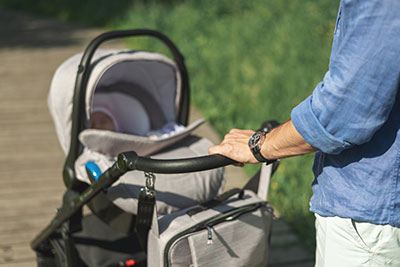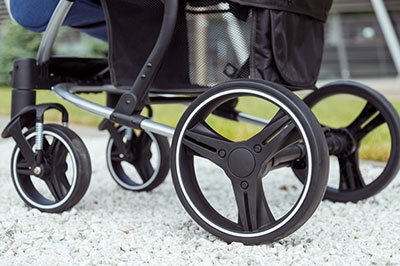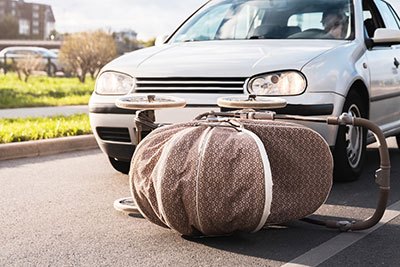Keeping your baby safe is an essential task for all parents. However, you need a safe baby stroller and other infant and nursery products to ensure your little one is secure in the restraint.
The main question is: What are safety tips when using a pram or stroller & how to keep a baby safe in child restraints?
We discuss the crucial safety rules to follow, how to use a pram or stroller safely, and how to prevent a serious injury in a pram or stroller.
More...
Take away key points:
Keeping baby safe in prams and strollers seems easy to most parents. However, multiple security standards must be considered to ensure your toddlers are safe. Let's see.
Purchasing a safe pram or stroller: What are the requirements?

When purchasing new prams and strollers, ensure they meet and exceed the ASTM F833 safety standards. Look for the labels, or check the instruction manual to examine whether the units meet the regulations.
However, if you're an Australian resident, look for the Australian Standard/New Zealand Standard 2088, issued by the Australian government. You can also ask your retailers if you're not sure whether the prams and strollers meet the safety regulations.
What are the guidelines when choosing a safe stroller/pram?
Below are some of the security guidelines for buying a pram or stroller:
Stroller accessories ensure the safety of your babies
Stroller accessories are always valuable when supervising your babies. So you won't be distracted by adverse weather or overloaded constructions.
Here are some of the most valuable stroller/pram accessories:
Best safety factors when using a stroller or a pram
Below are the most important tips for using a stroller/pram safely. These include:

Injuries caused by the strollers/prams
Injuries are common in baby products, so many children need hospital treatment due to stroller/pram misuse. One of the most common causes of stroller injuries is tipping over. Even the sturdiest constructions can easily tip over if you overload the items.
Another great injury cause is run-away strollers/prams. So you need to lock the brakes on the two wheels to prevent moving and rolling around. Other stroller-related injuries include:
- Pinched/trapped fingers or limbs
- Bruises, bumps, and similar baby head injuries after falling from baby products
- Suffocation and strangulation after falling asleep into strollers for too long
- Severe injuries or death if parents lose control of the items.

FAQs
How do I know if my stroller is safe?
You will know that your stroller is safe when it has the ASTM F833 label or the AS/NZS 2088 sticker. In addition, your stroller must have the following:
- Robust construction to prevent sudden collapses
- Strong folding mechanism
- Sturdy and locking wheel brakes
- Must meet baby's age and weight limit
- 5-point harness to ensure maximum security and stability.
Can a bumpy pram ride hurt a baby?
There isn't much evidence that a bumpy pram ride can hurt your baby and cause shaken baby syndrome. You will stroll and avoid huge stones. But, your baby must be shaken to cause head injury and brain damage. So, a slow pram ride on rough terrains isn't that scary.
How long should a baby lie flat in a pram?
A baby should lie flat in a pram until its muscles are developed and strong enough to keep its neck and head upright, around six or seven months old. They can use strollers after this period, as children can hold their whole bodies upright.
What type of stroller is safe for your baby?
The safest stroller type is the stroller with a 5-point harness. The stroller will offer more stability and security to your children and keep them adequately restrained to prevent falling off and injuries. However, they cannot detach the straps and unbuckle from the harness so quickly. Here you can find the best strollers.
How to use strollers safely at Disney World?
Follow these guidelines:
- Never use strollers on escalators
- Remove the child from the stroller while riding on DisneyWorld transportation
- Never leave personal items unattended in the units
- Cast members might move your strollers
- Mark strollers for easy finding
- Rent a stroller if you don't have a personal item
- Save receipts for rentals
- Pack a stroller rain cover
Find more information here.
Do you need to strap a baby into a pram?
Yes, you need to strap a baby into a pram to ensure maximum stability and security. However, your children cannot fall off and will be stable even if rolling around too much.
Final Words
There are multiple tips on how to use a pram or stroller safely and keep your little ones secure on the road.
Please follow the official guidelines and stick to the rules to avoid accidents and severe injuries. And, the most important thing - never leave your kids alone in the prams or strollers.
